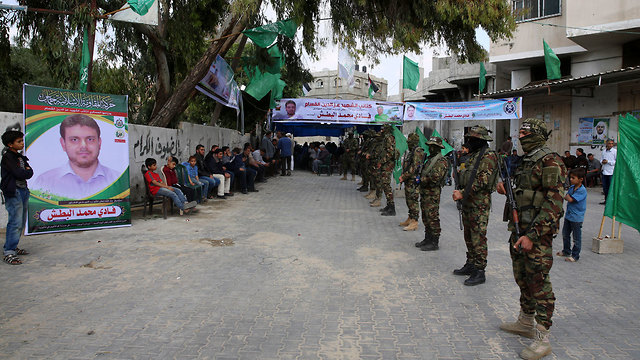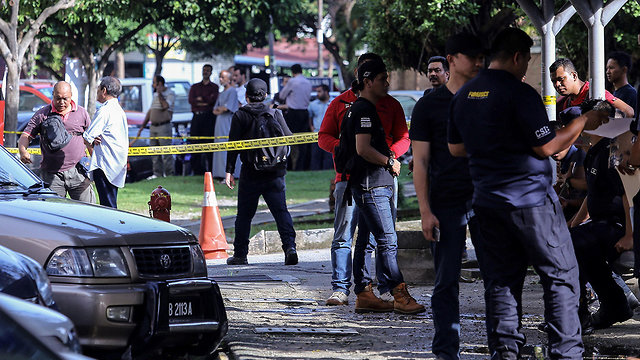Analysis: The professional killing of electrical engineer Fadi Albatsh in Kuala Lumpur is just another operation in a long list of assassinations, in and outside Gaza, against the minds taking part in the development of the terror group’s aerial system.
The professional assassination of electrical engineer Fadi Albatsh in Malaysia seems like an important operation aimed at thwarting a new ability Hamas has been trying to develop against Israel: the use of unmanned aerial vehicles.
In fact, it’s another operation in a long list of assassinations that have been carried out both within and outside Gaza, against the minds taking part in the development of the strip’s aerial system.
Albatsh, who served as a lecturer in the field of electrical engineering and alternative energy, became a UAV expert as well recently. Although he had been living in Malaysia in recent years, he would occasionally visit Gaza. In one of those visits, he was recruited by Hamas to help with the drone issue and to assist in the effort to improve the precision level of the rockets produced by the organization.

Albatsh’s assassination, and the efforts Hamas has been putting into achieving aerial abilities, should be reviewed in light of the technological and operational solutions the IDF has found for the terror organization’s threats, both in the interception of rockets and in the detection and destruction of attack tunnels.
Because of the IDF’s response to these threats, Hamas was forced to search for new offensive abilities, turning to the field of UAVs.
The Iron Dome system managed to intercept 89 percent of Hamas’s effective fire during Operation Protective Edge. In light of the improvements introduced into the anti-rocket defense system since then, moreover, it will likely be even more successful in the next conflict.
So far, Hamas has failed to come up with a solution to the Iron Dome. As a result, four years after Protective Edge, there has been no dramatic shift in severity of the rocket threat from Gaza.
A day after Protective Edge, Hamas resumed its tunnel digging, but the IDF didn’t rest on its laurels either. Since then, it has come up with two solutions to the threat: the first is the underground barrier—which is being built around the strip as we speak and will be ready by the end of 2019—and the second is the lab created in the Gaza Division, in cooperation with Israel’s finest minds, which is successfully detecting all of the tunnels one after the other.

Five Hamas tunnels have been destroyed in the past few months alone, with new measures that have made the tunnels completely unusable. As a result, Hamas has realized that all tunnels are going to be exposed and has decided to stop digging new ones.
Seeing its flagship project being gradually destroyed, and in a bid to maintain a military option against Israel, Hamas decided to focus its efforts on the UAV area. Like in other areas, Hamas is learning from Hezbollah and from Iran. Only two weeks ago, according to foreign reports, the Israel Air Force destroyed a large shipment of Iranian drones in the T-4 airbase in Syria.
But despite its best efforts, Hamas has so far been unsuccessful in obtaining advanced aerial abilities. Saturday’s assassination, as well as the assassination of flight engineer Mohammad al-Zawahri more than a year and a half ago in Tunisia, come as another blow to the Gaza terrorists’ attempt to find an efficient offensive measure against Israel.
As reported by Ynetnews
